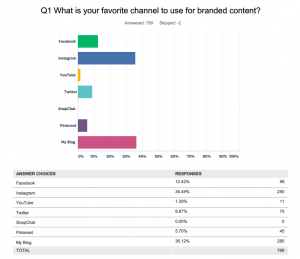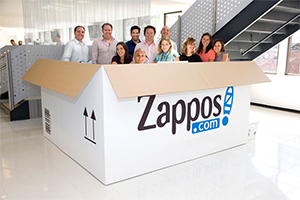
Companies spend thousands of dollars a year on search engine optimization. In fact, bigger firms might even end up spending over $ 10,000 a month for a national or international campaign.
More and more marketers are realizing the return on investment (ROI) of SEO. That’s clear from Forrester’s prediction that more than $ 103 billion will be spent on digital marketing, including SEO, by 2019.
Calculating the ROI of your SEO efforts may not be a walk in the park though.
How to Calculate Your SEO ROI
ROI is one of the key metrics used to calculate the performance of an organization. In terms of importance, it even overtakes other metrics like conversions and leads because it involves the overall cost of investment.
Even when it comes to SEO, ROI can be considered a key performance indicator. If your SEO efforts aren’t yielding enough returns on investment, it’s time to redesign your campaign.
Therefore, it’s crucial for businesses to calculate the SEO ROI for their campaigns. Are you getting enough out of what you invested? Is it really worth it? Let’s take a look at two ways you can accurately calculate your SEO ROI.
Choice 1
According to Neil Patel, SEO ROI can be calculated as follows:

Source: Quick Sprout
Here, LTV stands for the “Lifetime Value” of the customer. The image below is an example of how to calculate this step-by-step:

Source: Quick Sprout
CAC refers to “Cost per Acquisition.” This can be measured following the steps below:

Source: Quick Sprout
According to this formula, if a customer makes four purchases per year with an average purchase price of $ 60 and the gross profit margin is 10%, the lifetime value over five years is $ 120. This formula takes into account the average life expectancy, or the duration of time the customer is predicted to stay with the company.
The cost per acquisition is calculated as the sum of SEO cost per acquisition and base cost per acquisition. In this example, the SEO cost per acquisition is calculated as $ 40, whereas the base cost per acquisition is $ 20. The total cost per acquisition is then $ 60.
With the formula ROI = LTV – CAC, we can determine that ROI = $ 120 – $ 60 = $ 60.
So, the ROI in this scenario comes up to $ 60, which is 100%.
Choice 2
You can also calculate your SEO ROI using this formula:
ROI = (Total Revenue from SEO – Total Cost of SEO Campaign)/ Total Cost of SEO Campaign
The only problem with this formula is that it may not be too effective for non-eCommerce websites. However, you can set up goals and define conversion values for those goals in order to get more accurate results.
A conversion could be anything from email opt-ins, demo sign-ups, or long visit durations. Anything that drives your advertising goals and results in visitors converting to customers can be measured.
Tips for Effective ROI Calculation
As already mentioned, it’s a bit more challenging for non-eCommerce websites to accurately calculate their SEO ROI. You could use an SEO ROI calculator tool, but if you really want to dig deep into your ROI, try some of these tips:
- Distribute ROI Responsibility. For every business, the buying cycle closely follows the pattern shown below:

Source: Quick Sprout
This is why the SEO team shouldn’t hold sole responsibility for creating brand awareness and ensuring ROI. Other points of contact like customer support, sales representatives, and solutions specialists should also put an effort into converting prospective customers.
- Separate Branded Keywords. Excluding branded keywords can help you conduct a more accurate analysis. Many visitors who are already aware of your brand will include your company name when conducting their searches. These searches can’t be considered as part of your SEO efforts.
- Set up Customer Conversion Rate. Determining your customer conversion rate is one of the most challenging, yet important steps. To get a clear understanding of this factor, it would be necessary to work closely with the sales team. For instance, find out how many out of 10 leads result in a sale.
- Define Your Business Goals. Every company has its own business goals. While an eCommerce website aims to sell more products, a SaaS company could be aiming for higher demo sign-ups. Clearly define the conversion goals you wish to achieve through higher search traffic. You could use Google Analytics to set up goals, where you get to choose a template according to your business criteria.

How to Increase SEO ROI Like Mad
Now that you’ve calculated the ROI for your SEO efforts, you may be a bit disappointed. How exactly do you get a massive increase in your ROI? Apply the following tips to help boost your returns quickly.
- Target Audience by Location. Instead of spreading out your SEO efforts all across, it’s best to focus on an audience at a specific location where you get business. More and more companies are starting to realize the importance of geo-targeted local promotion. Devoting your SEO efforts to a certain location increases your chance of getting higher returns on your investment.
In a study conducted by SEER, building SEO campaigns around a few locations had a significant impact on their client’s ROI. In fact, this geo-targeting effort resulted in a 231% ROI within less than two months.
- Focus on Improving Your CTR. A higher click-through rate naturally improves your SEO ROI. Redesign your SEO efforts in a way that gets more people to visit your website. A low CTR could be due to a number of reasons. Maybe your title is not catchy, your CTAs aren’t prominent, or you’re using an old-fashioned SERP snippet.
Conduct an in-depth analysis of why your SEO efforts aren’t yielding enough clicks. This will help determine a proper strategy to make the right changes.
Digital & Social Articles on Business 2 Community(59)







